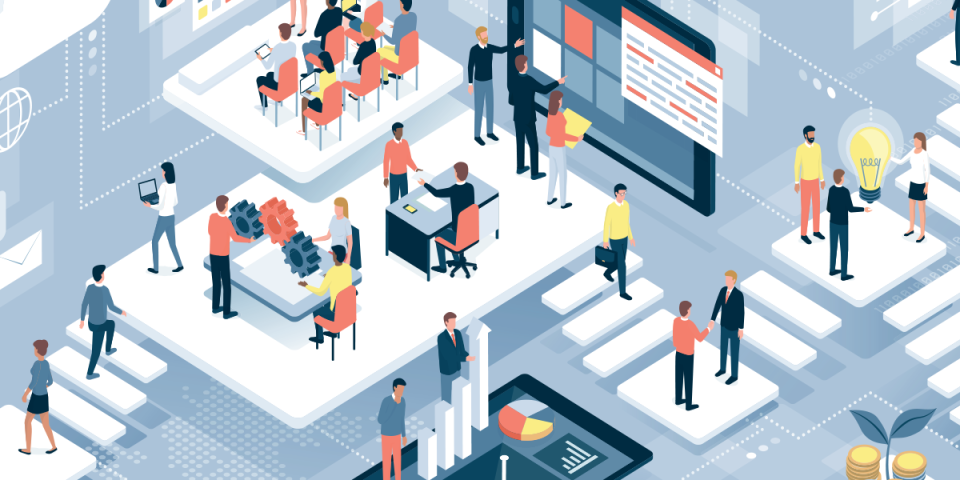
Back in my elementary youth, I remember using the SRA Reading Laboratory to improve my reading comprehension and vocabulary. The instructional system was based on a progressive reading curriculum that started at first grade and built all the way to college level texts. The key to the system, considered revolutionary for its time, was programmed instruction based on the performance of each individual student. After an initial placement assessment to determine the best reading level for each student, the system presented texts of increasing difficulty and used student test results to track progress and adjust the difficulty of the text based on those results. As a motivated overachiever, I sought to race through the reading levels, egged on by a teacher who displayed student achievement levels on a posted chart. My goal was to reach the top of that chart. By the end of the year, I was reading about six grade levels above my own, a language foundation upon which I have built ever since.
The SRA Reading Laboratory was my first introduction to what has evolved into Adaptive Learning. Primitive in comparison to modern computerized adaptive learning, the SRA system nevertheless pioneered the basic concept of using individualized test results to tailor learning to the personal needs of each learner. As the model that accompanies this article illustrates, the key to modern adaptive learning systems is the computer’s ability to adapt and adjust learning presentation based on the learner’s responses to previous content.
An Adaptive Learning Example
To illustrate how modern computer-enabled adaptive learning systems work, consider the reading example above. Instead of a box filled with cards containing progressively difficult reading passages, the computer version has hundreds of reading passages, each at a different difficulty level, carefully choreographed to represent a gradual progression from the basic to the advanced. An initial placement test determines the baseline starting point for each learner. The system then displays a series of texts written at that level on a wide variety of subjects, followed by a short comprehension quiz to determine if the student has mastered that level. If she succeeds, she moves up to the next level of difficulty. If he fails, he receives more material at the same level or even moves back a level until he is able to pass.
Besides tracking individual student progress through a curriculum, adaptive learning also uses analytics to provide individualized feedback to the instructor. This feedback provides the basis for evaluating student achievement and for intervening when students are struggling. For example, when a teacher notices that a student is stuck on a reading level and not making any progress beyond it, that’s a sign for an intervention to find out what is preventing the learner from progressing further.
Keys to Adaptive Learning Systems
The key to making these systems so adaptive is artificial intelligence built into them which monitors student’s inputs and responses and adjusts the difficulty of content accordingly. Put to use in modern corporate training settings, adaptive learning allows customization of standardized training content by providing unique pathways through the curriculum based on the experience and learning ability of each person. An advanced learner can breeze through the basics by testing out and focus only on what is new to them, while the beginner can take their time and master the foundation before tackling more advanced content. This allows one program to serve the needs of diverse learners.
Aside from individualizing content based on learners’ needs, the other key to adaptive learning is to create small chunks of modularized content that can be assembled and used in a variety of ways. This allows content to become as granular as the individual learners who attend online learning. It is a huge effort for instructional designers to deconstruct large classroom-based programs into small adaptive learning modules based on single task and knowledge objectives. However, the effort is rewarded with individualized learning that approaches the benefits of having a personal tutor along for the learning journey each step of the way.
Additional Resources for Adaptive Learning
To learn more, check out these purveyors of adaptive learning systems:
Alta by Knewton:
https://www.knewtonalta.com/?__hstc=47134456.3a6311db013610609a148f54e58fa3f7.1531156382471.1531156382471.1531156382471.1&__hssc=47134456.1.1531156382471&__hsfp=3446956451
Fulcrum Labs:
https://www.the-fulcrum.com/blog/adaptive-learning-technology-fulcrum-labs-faqs/
Raytheon RPS:
https://www.raytheon.com/capabilities/products/adaptive-learning?gclid=EAIaIQobChMI4oSHgMSS3AIVkcJkCh03rA69EAAYASAAEgIAVfD_BwE
